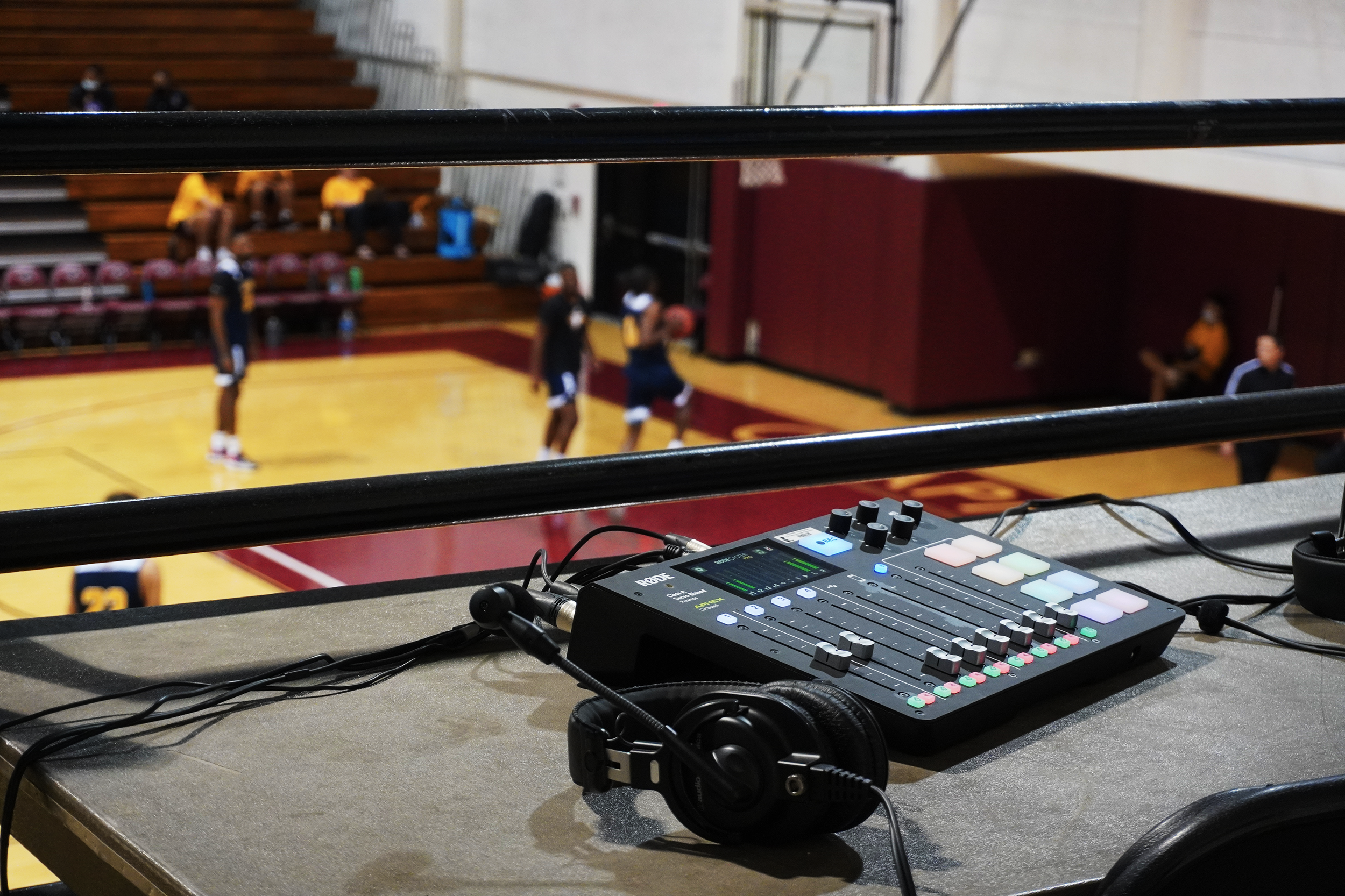Chapman Sports Broadcast Network: the team behind the team
Chapman Sports Broadcast Network is a student-run production crew that covers university sporting events through play-by-play and behind the scenes footage. SIMRAH AHMAD, Staff Photographer
After a prolonged hiatus due to the coronavirus pandemic, the Chapman Sports Broadcast Network (CSBN) returned at the start of September, bringing student athletes back to the Southern California Intercollegiate Athletic Conference (SCIAC) network. Students with little to no knowledge of sports broadcasting are brought unparalleled experience through the student-run club by working behind the scenes of Chapman sporting events.
For a home football game, fans arrive at the stadium shortly before kick-off, while students working the film and production crew have been on campus for hours preparing. CSBN member Ashlee Levien, a senior television writing and production major, typically comes at 11 a.m. to start producing the broadcast.
“I would call my director in at that time as well, so we could go over everything we had planned for that day,” Levien said. “I had the opportunity to work with both Calista Kirk and Spencer Riley as my directors this semester. They are both such talented Dodge kids who love the thrill of going live just like myself.”
The countdown to the 7 p.m. kick-off would consist of setting up cameras, running cables and making sure to have “at least two rehearsals of the pregame show” before going live on air, according to Levien.
Leading up to Saturday’s game, junior communication studies major Josh Blinder would work on his play-by-play performance days in advance.
Blinder said he spent “about 10 hours every week preparing for the football broadcast.” He also traveled for the four local away games to do radio commentary, for which he was always “happy to drive out” and represent the team.
CSBN member Josh Fernandez, a freshman broadcast journalism and documentary major, got his start in production as camera number five, the shot from the home field goal. Although it was his first time with the cameras, he “fell in love with it,” and told The Panther how helpful his fellow students and CSBN faculty director David Goedhart were in teaching him the ropes.
“I want to emphasize that (CSBN) is student-run,” Fernandez said. “Very few colleges do that … (These students go) above and beyond, even though the only incentive is experience.”
Even so, Blinder stressed the production is largely made possible by the assistance and mentorship of Goedhart — a sentiment shared by Levien and Fernandez.
“Without (Goedhart), nothing would be possible, and CSBN wouldn’t run remotely close to the level that it is,” Blinder said.
By building relationships within the athletics department, CSBN students have been able to bring an extra edge to their coverage content. Levien and Blinder brought the world of film and sports together by connecting with Chapman’s football team and coach.
“It’s awesome that our games get broadcasted, especially for people like me who have family that live out of town; it allows for family and friends to be able to follow our season,” said football captain and quarterback Jonston MacIntyre, a fifth year communication studies major. “Our broadcast team is great too. They are the goldfish of the SCIAC broadcasting aquarium.”
Making video packages to highlight certain players and share their stories to play at the broadcast’s halftime was another integral part of preparing for the show, especially for those students looking to gain more experience in documentary.
But for many CSBN students, their favorite memory so far was while covering the home football games.
Blinder remembers the “record-setting moment” at the Cal Lutheran game when senior football captain Christ Tsirtsis made a pick-six against the Kingsmen. And although it’s now postseason, Blinder said he fondly recalls the support the football team has brought to the basketball games while he and Fernandez did the play-by-play.
For Levien, Blinder, Fernandez and other CSBN students, football season encompassed the bulk of their experience with the network. However, now they get to carry on the energy into basketball season and explore what other sports would benefit from coverage.

